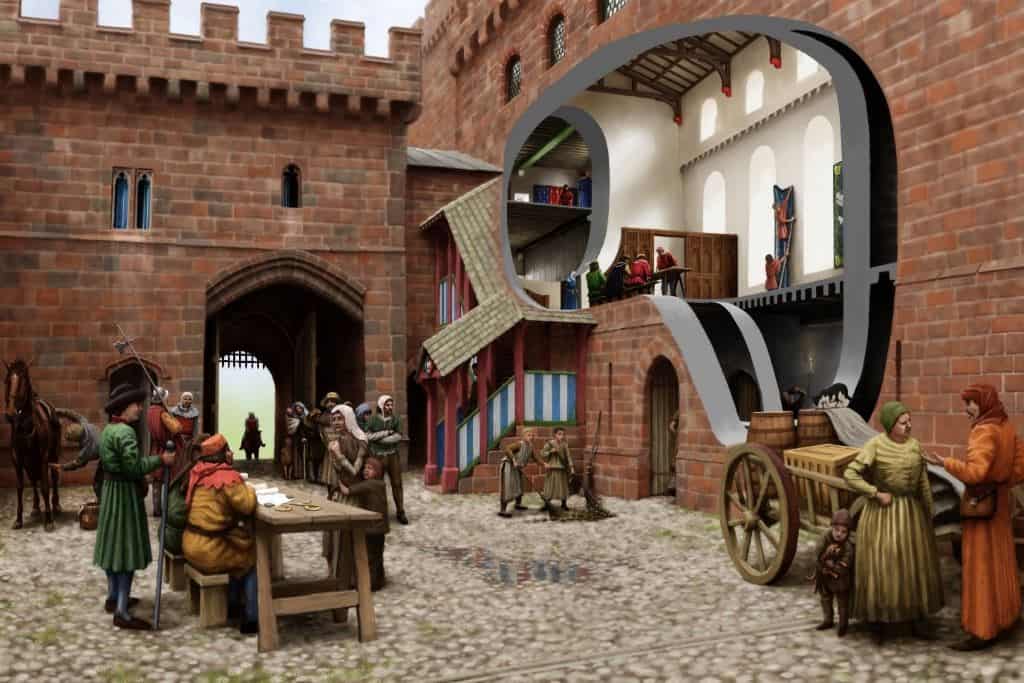
A virtual reconstruction of Penrith Castle has imagined how it may have looked 500 years ago.
The project has been funded by the Castle Studies Trust and completed by historians Pete Urmston and Dr Will Wyeth of English Heritage – in a bid to help promote the understanding of castles in the UK and abroad.
The reconstruction is based on a picture of the castle today and captures several parts of the site including the great hall with access stairs, Red Tower and parts of the Gloucester-era gatehouse.
It incorporates the part of the castle most familiar to passers-by – the Red Tower – and an assemblage of standing features which in general visitors may find difficult to understand.
It is populated with a scene from its tenure by Richard of Gloucester – a meeting of castle staff with tenants and poor folk to hear pleas.
A single figure who is attested at the castle and whose presence would be in keeping with a day-to-day scene in castle life in the late 15th-century is represented: Sir Christopher Moresby, depicted on the far left standing with a staff and wearing a green coat.
The new reconstruction aims to place the people of Penrith Castle at the centre of its reimagination, while bringing back its lost buildings and interiors. In time, the image will feature on a new panel scheme in the castle.
The reconstruction of the castle at this point of history was chosen after the third and final stage of major building works, which took place under the stewardship and guidance of Richard Duke of Gloucester, who later became Richard III, while staying in nearby Dockray Hall.

The team working on the reconstruction had to identify spaces and what they were used for in the castle from scratch with a review of sources including several 16th-century surveys and antiquarian images such as those of the Buck brothers – who were 18th century English engravers and printmakers.
But while the surveys mention buildings and spaces with attendant measurements, the detail is misleading.
The missing portions of the castle today restrict historians from confidently identifying spaces such as halls, chambers, kitchen and accommodations.
Certain architectural features that survive can help – but a convincing and comprehensive site-wide reconstruction of the castle was not achievable.
Dr Will Wyeth, properties historian at English Heritage, said: “Penrith Castle is a cherished asset to the people of Penrith. The remains of the castle can be difficult to understand, but it is our hope that this new image will shed light on its medieval heyday.
“Thanks to the artistic skill of Pete Urmston, the insight of English Heritage volunteer Joanna, and a generous grant from The Castle Studies Trust, we have brought medieval Penrith Castle to life.”
Castle Studies Trust chair of trustees Jeremy Cunnington added: “The Castle Studies Trust is delighted with the results of this project as it brings to life how the castle would have looked at its zenith in the late 15th Century.”






























